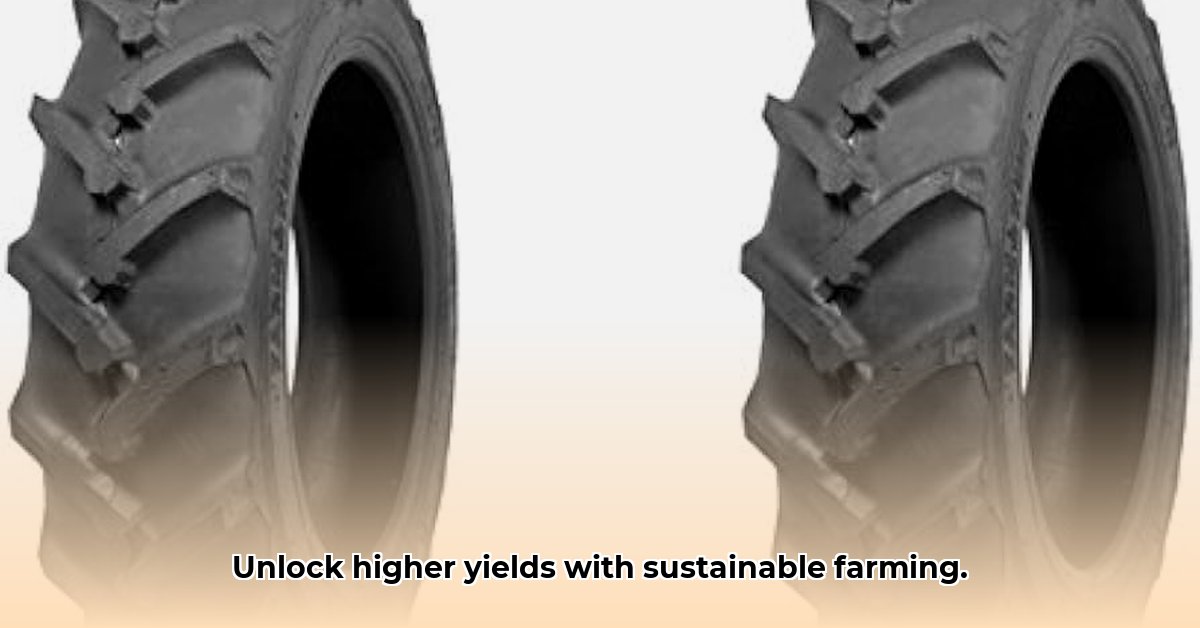
14-Inch Hybrid Tractor Tires: A Deep Dive into Sustainable Agriculture
Sustainable agriculture demands innovative solutions, and tire technology plays a pivotal role. 14-inch hybrid tractor tires represent a significant advancement, promising enhanced efficiency and reduced environmental impact. This detailed analysis explores the benefits, limitations, and future potential of these innovative tires, focusing on key brands and providing actionable insights for farmers and industry stakeholders. For more on smaller tires, check out these lawn tractor tires.
Introduction to Hybrid Tractor Tires: Bridging the Gap
Hybrid tractor tires combine features traditionally found in agricultural and turf tires. This unique blend aims to optimize performance across diverse soil conditions, offering a compelling alternative to specialized tires. Key advantages include:
- Reduced Soil Compaction: Their design minimizes ground pressure, protecting soil structure and promoting long-term soil health. This directly impacts crop yields and reduces the need for soil remediation.
- Improved Traction: Enhanced grip across various terrains translates to improved fuel efficiency and reduced operating time, increasing overall productivity.
- Extended Lifespan: Durable construction and optimized tread patterns contribute to a longer lifespan, reducing replacement frequency and minimizing tire waste.
However, the term "hybrid" lacks standardized definition across manufacturers, highlighting a need for improved industry clarity and standardized testing protocols.
Case Studies: Goodyear R14T and Carlisle Farm Specialist
While manufacturer claims for enhanced traction and reduced compaction are common, independent verification is often lacking. This section examines two leading brands—Goodyear R14T and Carlisle Farm Specialist—based on available information, acknowledging gaps in quantifiable data.
Goodyear R14T: User reviews from reputable farming forums suggest improved longevity and versatile traction across various soil types. However, precise data on load capacity, tread depth, material composition, and direct comparisons to standard agricultural tires remain unavailable. Manufacturers' performance claims require independent verification through rigorous testing.
Carlisle Farm Specialist: Anecdotal evidence suggests excellent soil compaction reduction, particularly in softer soils. Again, detailed specifications and comparative performance data relative to standard tires are needed for a comprehensive assessment. Independent testing is crucial for verifying the manufacturer's claims about compaction reduction under varying conditions. More research is needed before definitive conclusions can be drawn.
Analysis of Performance Trade-offs: Versatility vs. Specialization
While hybrid tires offer versatility, they may not always outperform specialized agricultural or turf tires in extreme conditions. A tire designed solely for heavy mud might provide superior traction in saturated fields, while a dedicated turf tire could minimize ground disturbance even more effectively than a hybrid. Future research should directly compare hybrid 14-inch tires against their specialized counterparts under controlled conditions using standardized metrics. The absence of such data currently limits our ability to fully assess the performance trade-offs.
Sustainable Aspects: The Environmental Footprint
The sustainability of hybrid tires encompasses their entire lifecycle: production, use, and disposal. While extended lifespans contribute to reduced waste, a life cycle assessment (LCA) is needed to comprehensively evaluate their overall environmental impact. Information on the materials used, energy consumption during manufacturing, and end-of-life options is critically lacking. This data is necessary to compare the sustainability of hybrid tires with traditional options. A thorough LCA should be a priority for manufacturers and researchers.
Future Trends and Recommendations: A Collaborative Approach
Realizing the full potential of hybrid 14-inch tractor tires requires a collaborative effort:
Farmers: Conduct thorough field testing to assess performance under specific site conditions and evaluate the long-term cost-benefit analysis.
Manufacturers: Invest in comprehensive, independent testing and transparently publish results. Establish standardized performance metrics for hybrid tires.
Researchers: Conduct rigorous comparative studies across various soil types and operating conditions. Develop and promote standardized testing protocols.
Regulatory Bodies: Develop standardized testing protocols and lifecycle assessment guidelines to facilitate fair comparisons and incentivize sustainable tire development.
Conclusion: Driving Towards Sustainable Agriculture
Hybrid 14-inch tractor tires offer significant potential for improving sustainable agricultural practices. However, progress requires a concerted effort to address the current data gaps. Through collaboration and transparent research, we can unlock the full potential of this technology, fostering a more environmentally responsible and economically viable agricultural sector. Further research is paramount to achieving this goal.